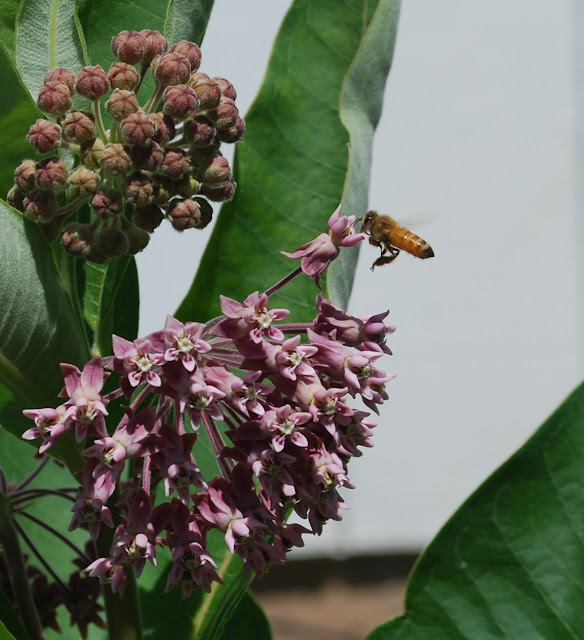Just a mixture of photos of flowers with honeybees.
I think borage is one of the top honeybee forage flowers. They do self-seed, prolifically, year after year. However, the volunteer seedlings are easy to pull out if not wanted. Borage has a long period of blooming, and is at its peak when a lot of the others are done.
A groundcover sedum, I think Sedum kamtschaticum. These were cuttings, basically trimmings from someones plant, they left them on the break table at work for anyone who wanted them. I just stuck them in the ground, no special care, and they took off and filled their space. Honeybees seem to like most of the Sedums.
Milkweed. I think this one is Asclepias incarnata. I had covered the area this Spring with a ground fabric and tree mulch, but it came up at the edge. I'm glad it did. It also has an offspring in a container, which I intend to transplant.
Oregano flowers are usually covered with honeybees. You can hear them hum before you see them.
I don't know this flower. It came up in the uncut grass.
Some of the Chinese chives are still blooming. Good for honeybees, who are always all over the chive flowers.
More oregano.
This is the larger, bushier perennial type sedum. It's similar to "Autumn Joy" but I don't think it is.


















































